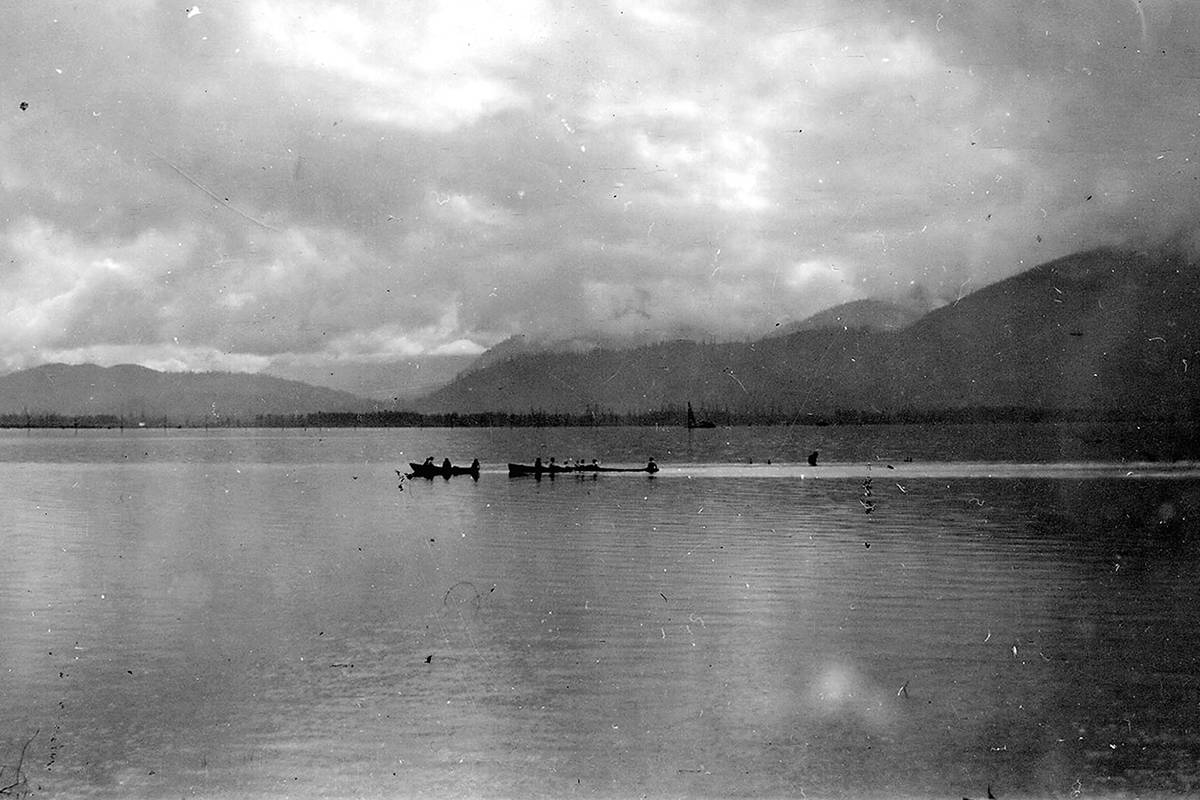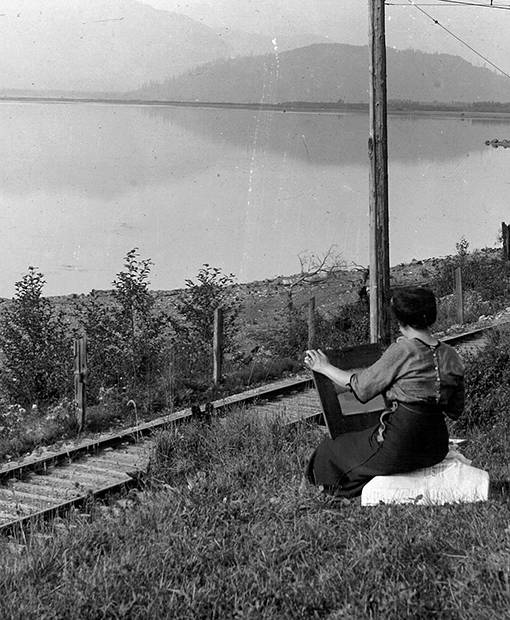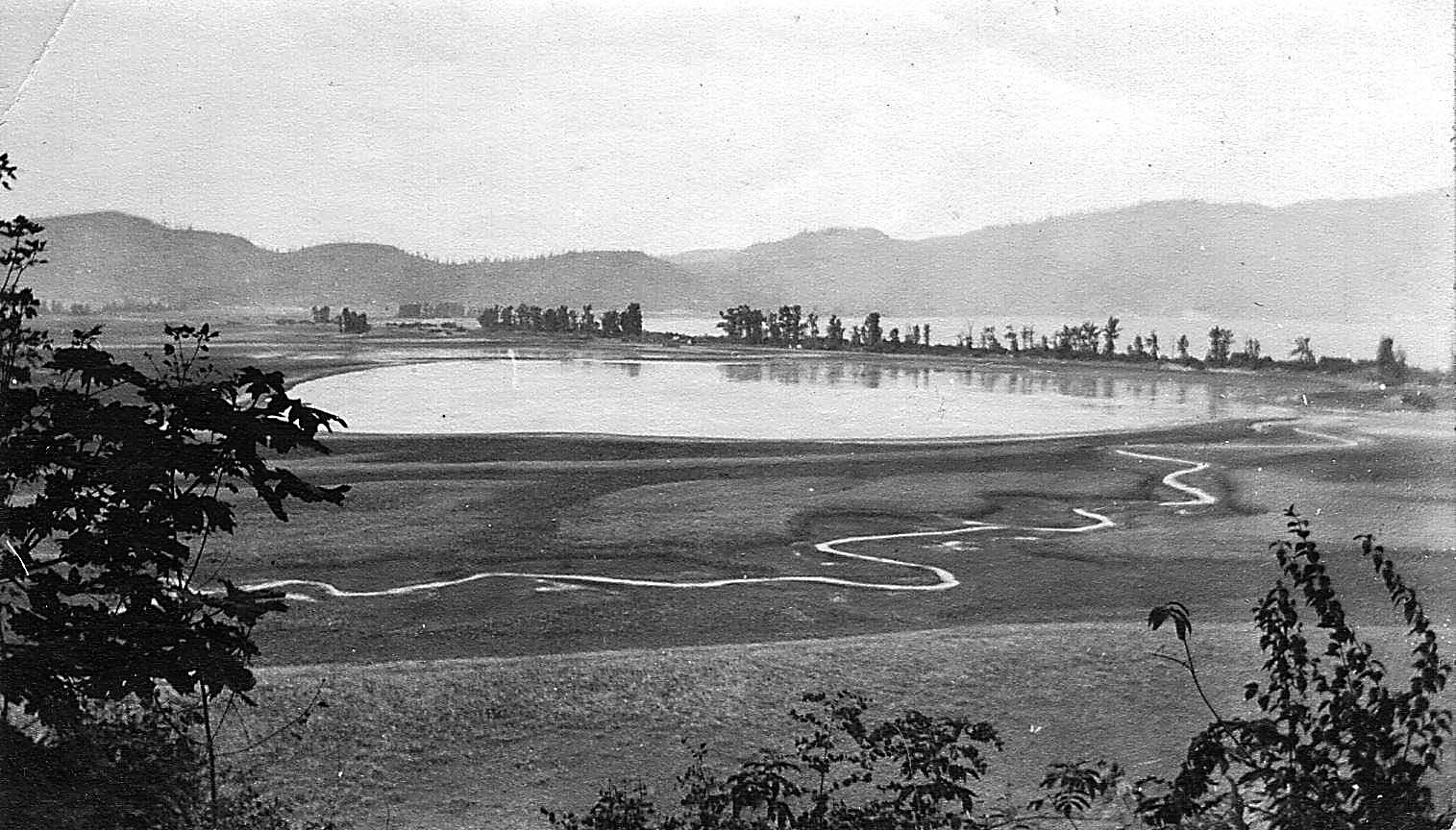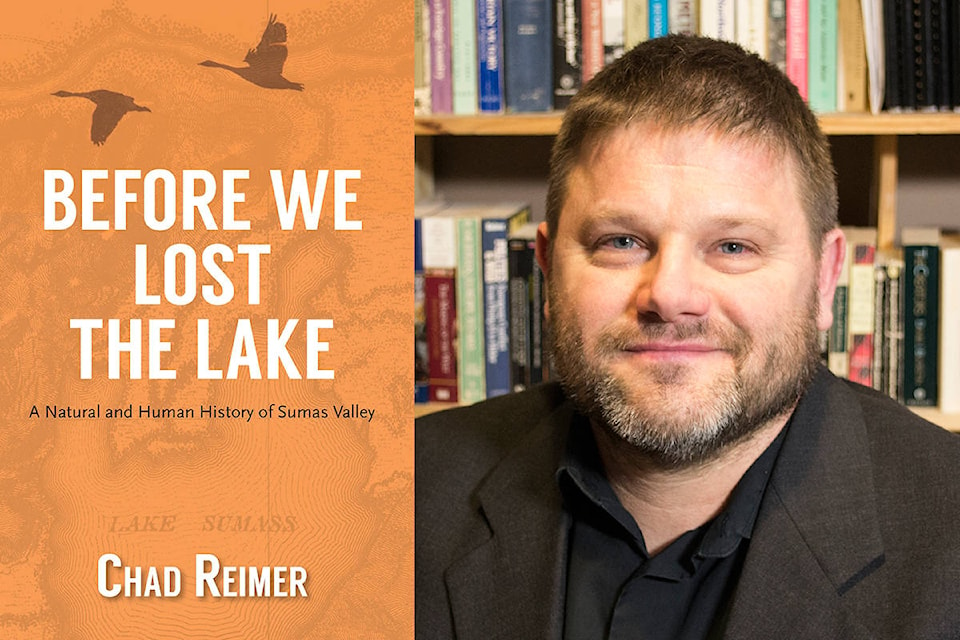The Fraser Valley’s lost lake should be remembered for its long life, not its brief, contentious end, the author of a new history book contends.
For thousands of years, Sumas Lake sat near the centre of local culture and life. Then, nearly 100 years ago, engineers drained Sumas Lake, built a canal to harness the Vedder River, and, in the process, radically transformed the area.
The so-called “reclamation” of the lake has been hailed as an engineering marvel and vilified as a major wrong perpetrated on local Indigenous people.
But most historical accounts of the lake have focused on the brief period when newcomers to the region drained it and turned its lakebed into farmland.
Chad Reimer hopes his book “Before We Lost The Lake” will change that. Reimer has written what he calls a “biography” of the lake that starts with the creation of it when glaciers receded more than 8,000 years ago.
Drawing on archived oral accounts from First Nation elders given decades ago, along with the written accounts of explorers, navigators and surveyors, Reimer tries to give readers a sense of what life by – and on – the lake was like before it disappeared.
For thousands of years, the lake sat in a shallow basin between Sumas and Vedder mountains. It usually covered around 132 square miles, but during the spring and winter, its waters would rise and its expanse would double or triple.
Even when the lake wasn’t flooding, vast expanses of wetlands and swamps covered the valley floor.
“The very traits that were considered fatal flaws of Sumas Lake – yearly flooding, symptoms of its aging, its shallowness – made it an exceptionally fertile place for plants and animals,” Reimer writes.
That fertility helped sustain a vibrant local community.
The nature of oral histories and the recency of written accounts means much of our knowledge about that community comes from accounts drawn from the early- to late-1800s, before large-scale immigration by Euro-Americans began.
Even so, Reimer conjures a landscape radically different from that known to those who pass through the region today.
By the mid-1840s, a large Sema:th community was situated near the mouth of Sumas River, just off the eastern point of Sumas Mountain. There, a surveyor found “quite a large stockade fort” that resembled those built elsewhere by the Hudson Bay Company.
Other settlements were strung along a five-mile stretch of the river. And the lake itself was also a place to live.
When the mosquitoes came, Reimer writes that many residents would head to small collections of huts – but no single village – built on stilts around the lake.
While salmon from the Fraser River was the main food staple, Sumas Lake was, and its surrounding wetlands were, key resource hubs.
“The Sema:th’s reliance on Sumas Lake started the most basic level, for it provided the material resources that made their way of life possible,” Reimer writes.
Plants and trees were used to create clothes, nets, mats and boats. Birds on the lake were caught and killed en masse using massive nets hoisted into the air by teams of camouflaged canoeists then dropped on their unsuspecting prey.
And in the lake’s waters, sturgeon were the big catch. Their caviar was a delicacy and eaten with oil.
But just as valuable were the bladders of sturgeon, which were extracted, rolled into bundles, and soaked in water to create isinglass, “the strongest animal glue known.”
Reimer writes that “historians have failed to grasp the significance of isinglass to the Sema:th and its connection to the schools of sturgeon found in Sumas lake. Production, use and widespread trade of the ‘sturgeon-glue’ reveal how sophisticated the Sema:th use of resources truly was.”
Europeans began trickling into the region in the second half of the 1800s, but it wasn’t until the lake was drained in the early 1920s that white people really began moving to the area.
The process transformed the region and its population in ways that are only now being grappled with.
For a century, the draining of the lake and associated engineering works have been described as having allowed for the reclamation of farmland. But, Reimer notes, the work “didn’t reclaim the lake, it ended it.”
It’s impossible to evaluate the decision to do so, without an understanding of what was lost.
“You can’t appreciated the impact of the draining of the lake if you don’t know how it was used before.”
The Reach Gallery Museum will host a book launch for Before We Lost The Lake on Thursday, Dec. 13 from 6 to 8 p.m.
RELATED: Sumas First Nation signs declaration in Abbotsford
RELATED: Sumas First Nation explores compensation claim for loss of Sumas Lake
@ty_olsen
tolsen@abbynews.com
Like us on Facebook and follow us on Twitter.



